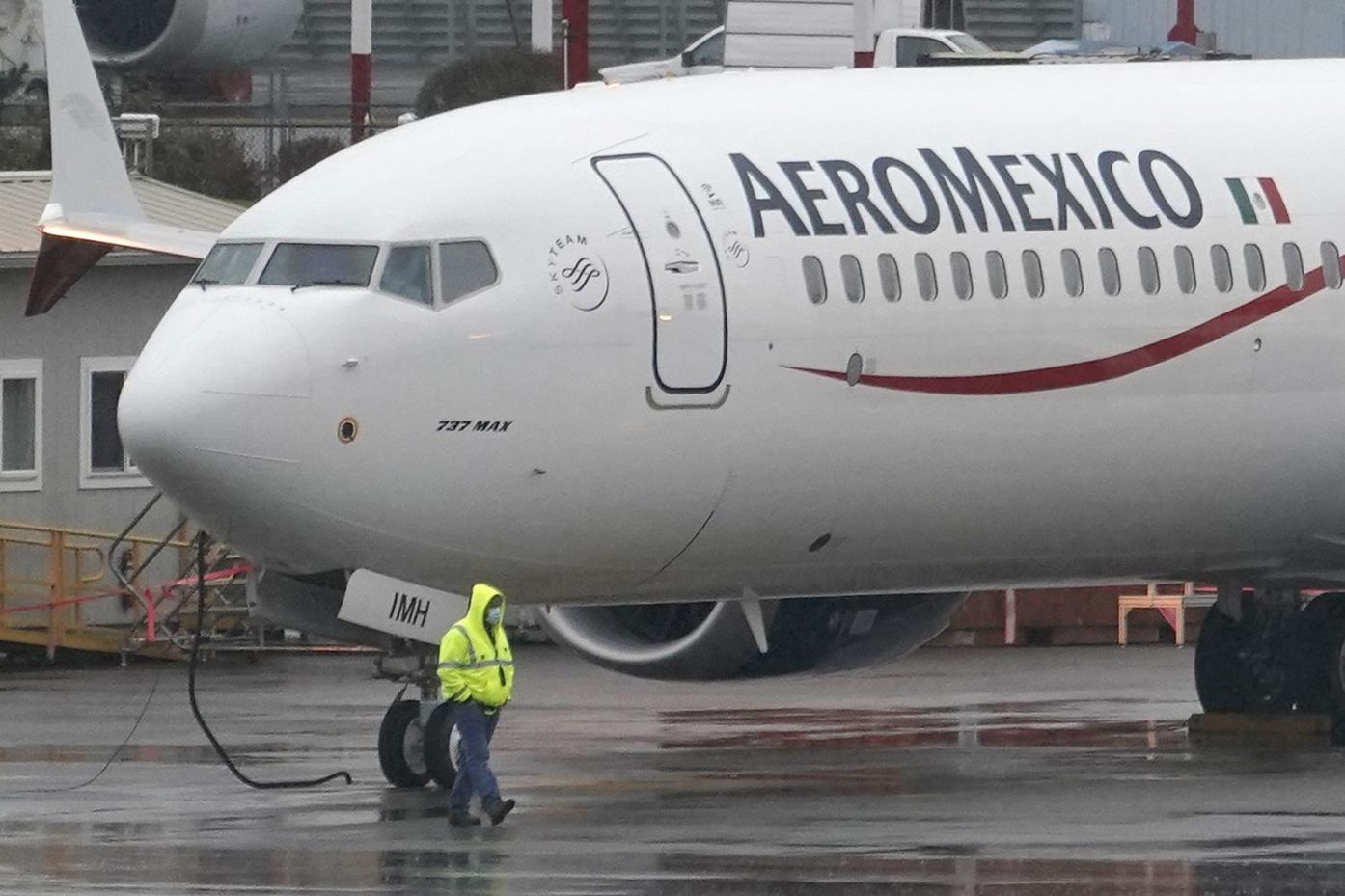
Safety experts recommended Wednesday that the engines on Boeing’s troubled 737 Max airplanes be modified quickly to prevent smoke from filling the cockpit or cabin after a safety feature is activated following a bird strike.
The problem detailed by the National Transportation Safety Board emerged after two bird strikes involving Southwest Airlines planes in 2023 – one in Havana, Cuba, and another in New Orleans. The Federal Aviation Administration and Boeing already warned airlines and pilots about the problem and the engine maker has been working on a fix.
The NTSB said that the engines CFM International makes for the Boeing plane can inadvertently release oil into the hot engine when the safety feature, called a load reduction device, is activated after a bird strike or similar engine issue. The resulting smoke feeds directly into either the cockpit or passenger cabin depending on which engine was struck.
Similar engine models with the same safety feature are also used on Airbus A320neo planes and C919 planes made by the Commercial Aircraft Corporation of China. The NTSB urged European and Chinese aviation safety regulators to evaluate those engine models to determine if they could also be susceptible to the smoke problem.
The new safety device that CFM added to its engines solved one problem by limiting damage when an engine starts to come apart, but created a new problem by releasing the oil that burns and generates smoke.
“This is a case of an unintended consequence of a new and innovative safety idea where if the fan gets unbalanced that this is a way to alleviate the load and thereby doing less damage to the engine, the engine pylon, all of that,” said aviation safety expert John Cox, who is CEO of the Safety Operating Systems consulting firm.
CFM said in a statement that it is “aligned with the NTSB’s recommendations and the work is already underway, in close partnership with our airframers, to enhance the capability of this important system.” The company, which is a joint venture between GE Aerospace and Safran Aircraft Engines, confirmed it is working on a software update for the 737 Max’s engines and said it is evaluating similar engine models.
The NTSB investigated a December 2023 incident in which a Southwest Airlines plane struck a bird while taking off from New Orleans and had to land quickly after thick smoke filled the cockpit – even making it hard for the pilot to see the instrument panel or his copilot.
In an incident nine months earlier involving another Southwest 737 Max, smoke filled the cabin after a bird strike after takeoff in Havana.
Air from the left engine on a 737 Max flows directly into the cockpit while air from the right engine flows into the passenger cabin.
While these incidents were both bird strikes, the NTSB said this could happen in certain other circumstances.
The FAA said in a statement that it agrees with the NTSB recommendations and when “the engine manufacturer develops a permanent mitigation, we will require operators to implement it within an appropriate timeframe.”
Pilots can act to limit smoke in the plane by manually cutting off airflow from the engines, but smoke can quickly start to fill the cabin within a few seconds. The engine manufacturer is working on a software update that should do that automatically, but that’s not expected to be ready until sometime in the first quarter of next year.
The NTSB said in its report that several pilots who fly Boeing 737s told investigators they weren’t aware of these incidents despite the efforts Boeing and FAA have made. NTSB said “it is critical to ensure that pilots who fly airplanes equipped with CFM LEAP-1B engines are fully aware of the potential for smoke in the cockpit.”
Boeing and Airbus didn’t immediately respond to requests for comment.
A Southwest spokesperson said the airline has been in close contact with the FAA, Boeing and the engine maker since the incidents and notified its pilots after they happened. The spokesperson said the airline continues to address the issue through its training and safety management systems.
The Boeing 737 Max planes have been the focus since they were involved in both incidents, and there has been a history of other problems with that plane.
The Max version of Boeing’s bestselling 737 airplane has been the source of persistent troubles for Boeing after two of the jets crashed. The crashes, one in Indonesia in 2018 and another in Ethiopia in 2019, killed 346 people.
The problem in those crashes stemmed from a sensor providing faulty readings that pushed the nose down, leaving pilots unable to regain control. After the second crash, Max jets were grounded worldwide until the company redesigned the system.
Last month, the Justice Department reached a deal to allow Boeing to avoid criminal prosecution for allegedly misleading U.S. regulators about the Max before the two crashes.
Worries about the plane flared up again after a door plug blew off a Max operated by Alaska Airlines, leading regulators to cap Boeing’s production at 38 jets per month. The NTSB plans to meet next Tuesday to discuss what investigators found about that incident.


![Former Bravo Star Charged After Violent Assault Using a Rock-Filled Sock in Tennessee Walmart [WATCH]](https://www.right2024.com/wp-content/uploads/2025/07/Former-Bravo-Star-Charged-After-Violent-Assault-Using-a-Rock-Filled-350x250.jpg)



![Karoline Leavitt Levels CNN's Kaitlan Collins and Other Legacy Media Reporters [WATCH]](https://www.right2024.com/wp-content/uploads/2025/07/Karoline-Leavitt-Levels-CNNs-Kaitlan-Collins-and-Other-Legacy-Media-350x250.jpg)
![Man Arrested After Screaming at Senators During Big Beautiful Bill Debate [WATCH]](https://www.right2024.com/wp-content/uploads/2025/06/Man-Arrested-After-Screaming-at-Senators-During-Big-Beautiful-Bill-350x250.jpg)



![Illegal Alien Walked Free After Decapitating Woman, Abusing Corpse for Weeks [WATCH]](https://www.right2024.com/wp-content/uploads/2025/07/1753013138_Illegal-Alien-Walked-Free-After-Decapitating-Woman-Abusing-Corpse-for-350x250.jpg)





